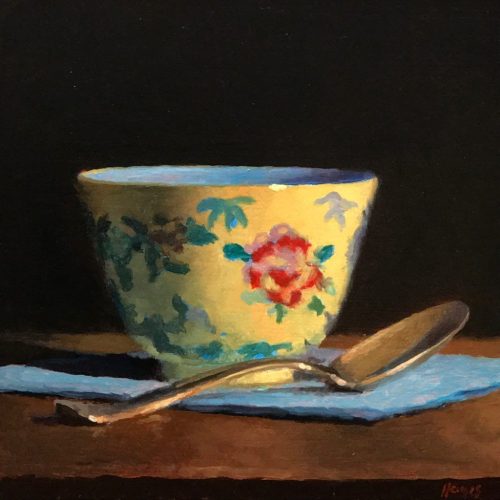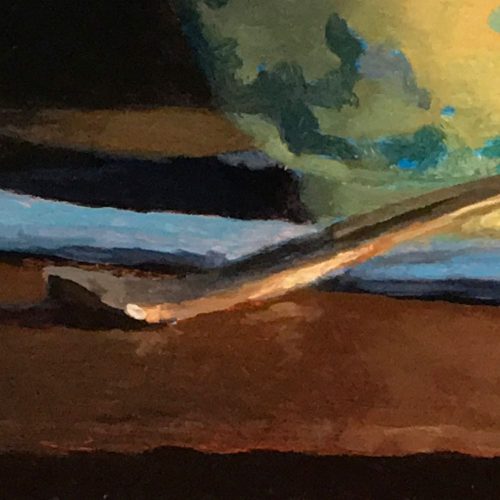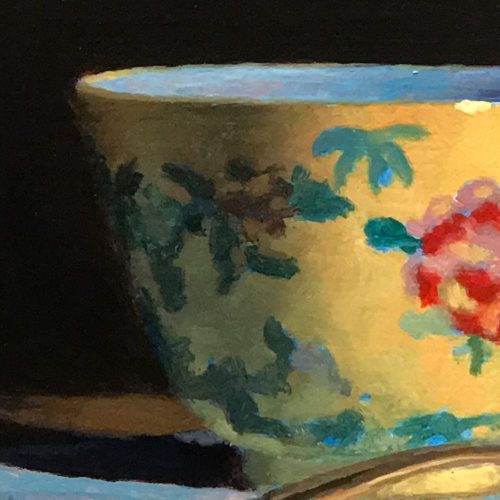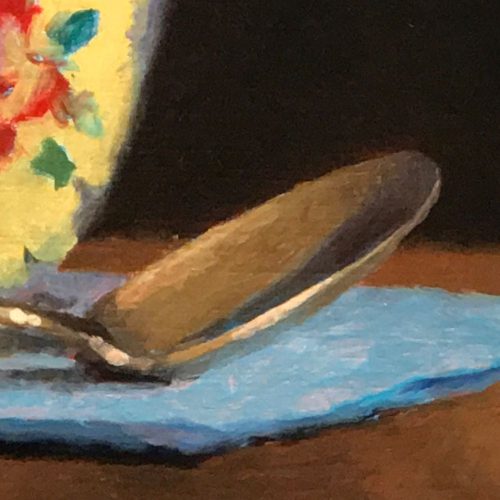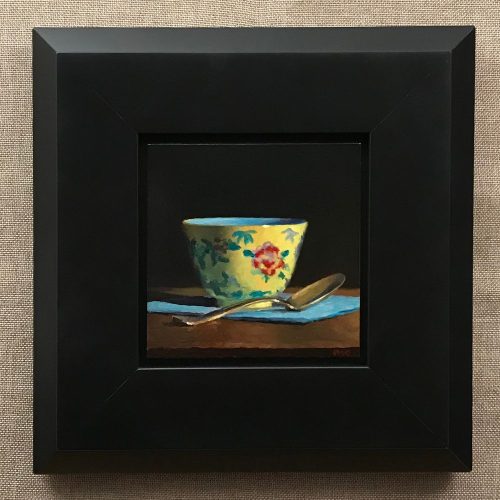This week’s featured painting is “Silver Spoon, Chinese Teacup, Blue Napkin” from 2021. It is done with oil on panel, and measures 5 x 5 inches.
I create most of my paintings using the same process – a careful drawing on the panel, followed by a black and white underpainting, and completed with the color layer.
For me, it is a comfortable way to work, and by following these steps I can reliably make a satisfactory painting.
But now and then – probably 1 painting in 10 – I will experiment with changing the process in some way, or even attempting a different process altogether.
This was one of those experiments.
I began with the full drawing on the panel as usual.
However, rather than doing the underpainting in black and white, I did it in color – with a twist.
Putting a warm color and a cool color next to each other can create a beautiful vibration between the two, which seems to enhance the inherent beauty of each color, as opposed to how they appear separately.
Since underpaintings are frequently visible where the top layers of paint are thin, I wanted to exploit this vibration by setting the underpainting in the opposite temperature of the final color.
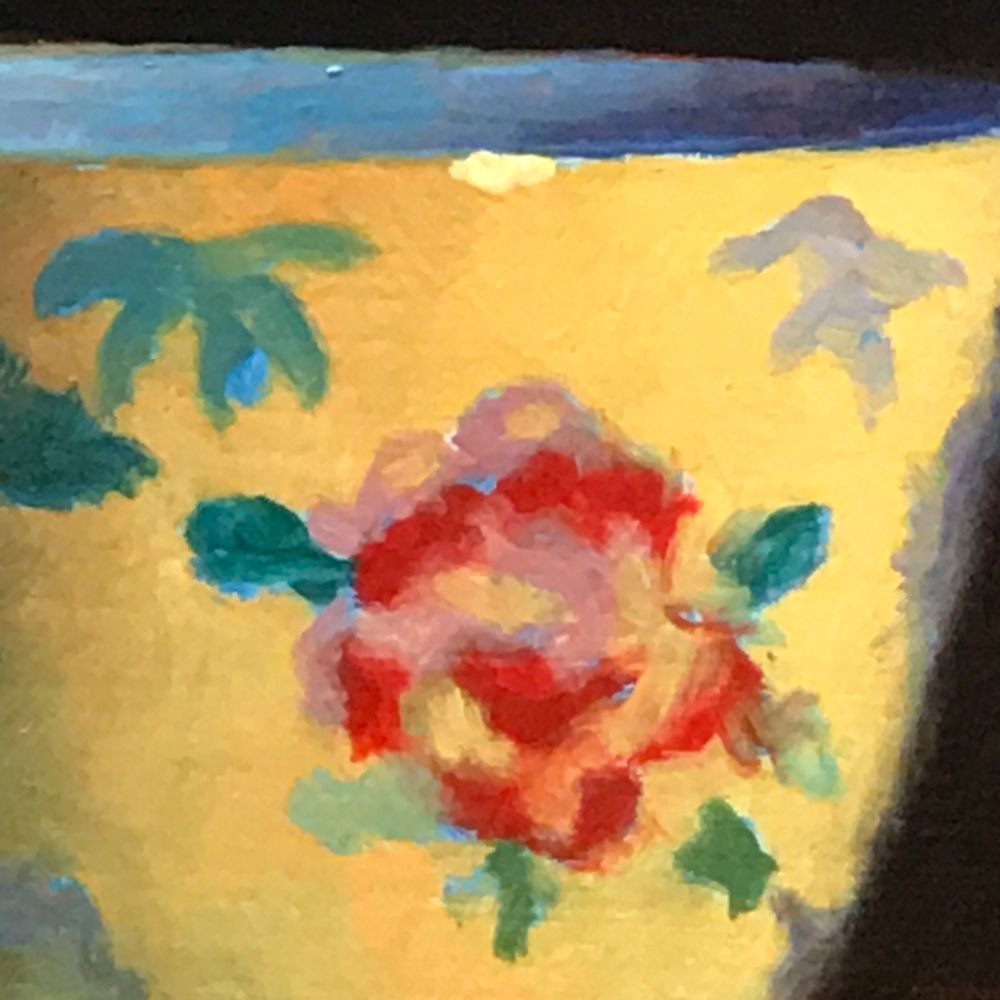
For example, the yellow teacup – a warm vibrant color – has a cool blue underpainting which peeks out in the gaps between the floral details.
The blue napkin has a warmer red underpainting – the top layer of paint here was quite thin, so the underpainting is clearly visible.
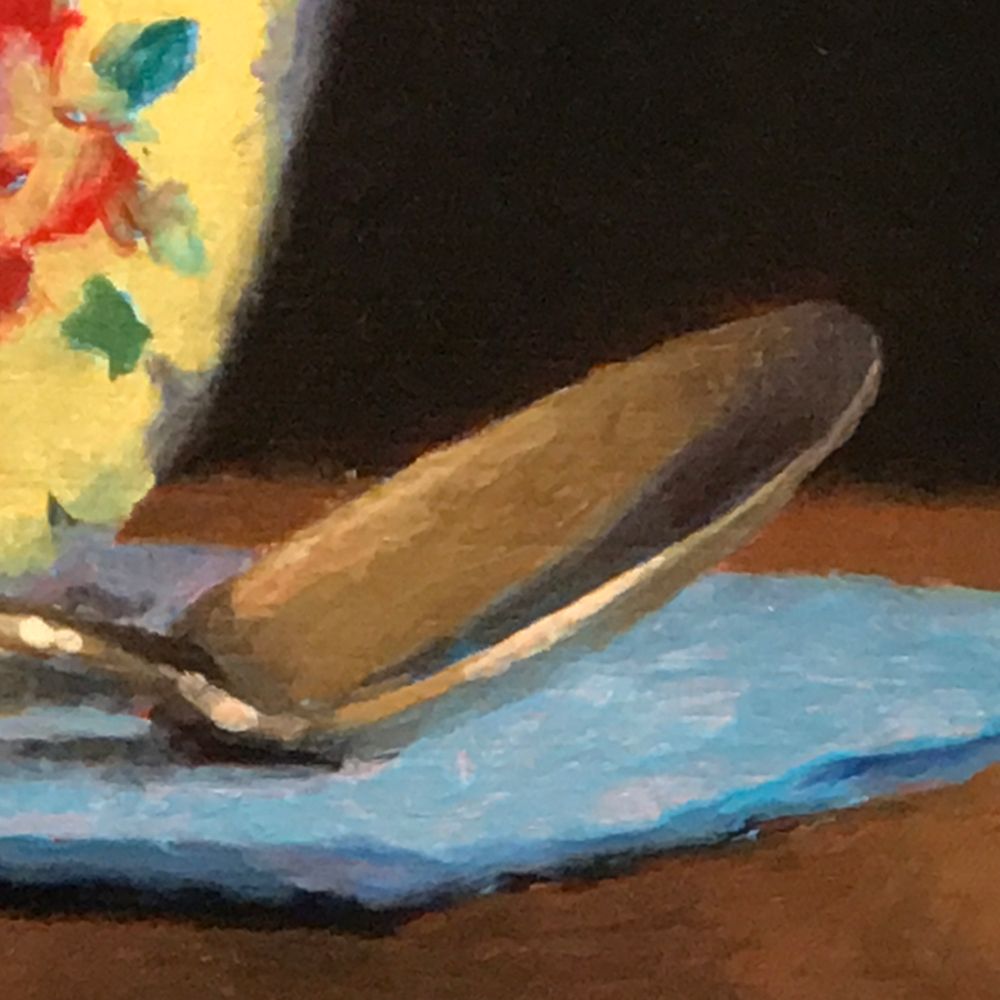
The resulting “temperature vibration” gives the colors just a little more strength and presence than they would have had with a black and white underpainting.
It’s a more involved way of completing this part of the process, and it has a few inherent difficulties and drawbacks.
But it produced some interesting results, and I think it’s well worth trying again.
